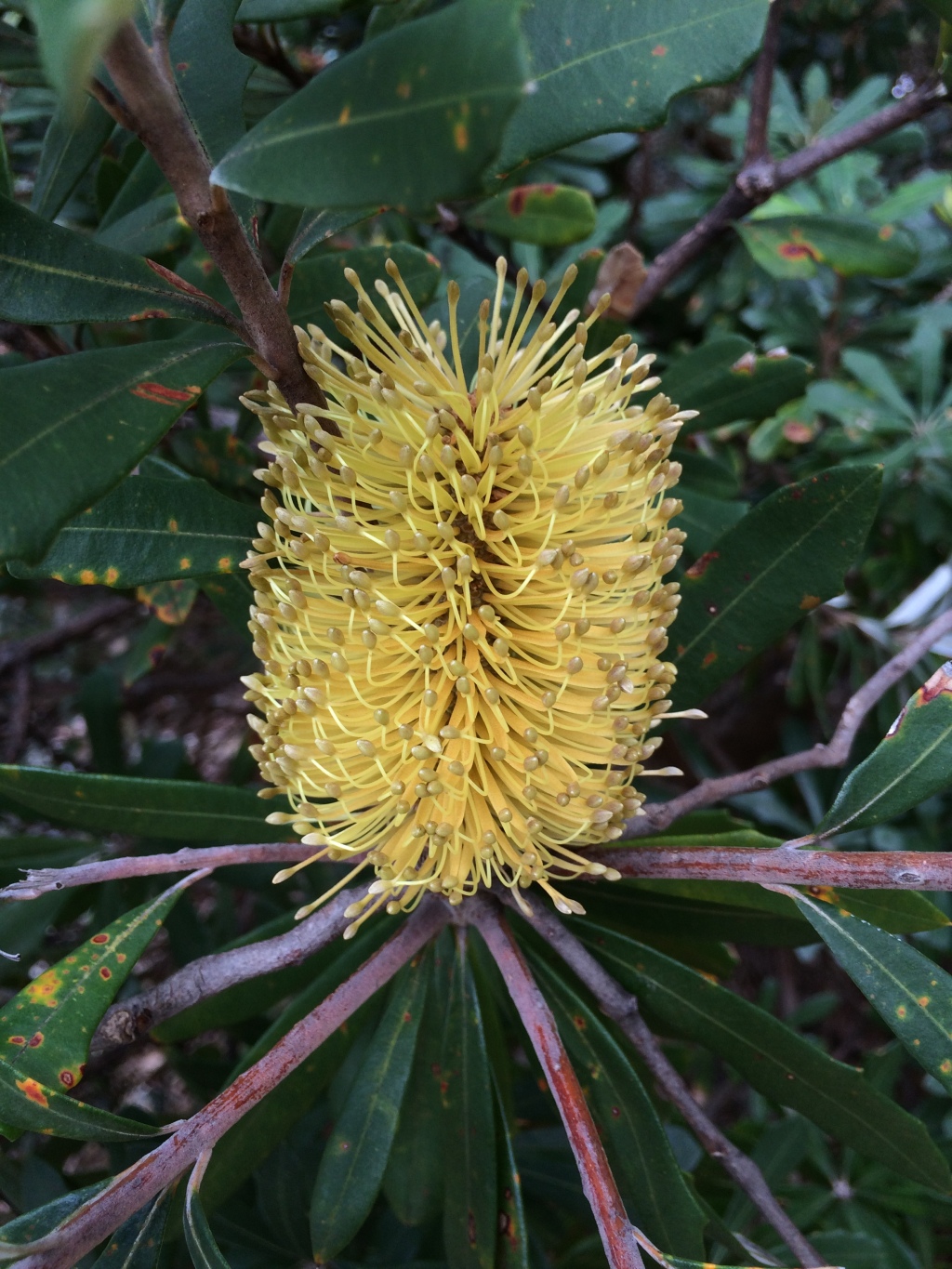Banksia integrifolia subsp. integrifolia
Erect tree to c. 25 m high; bark grey-brown, thick, roughly tesselated; branchlets striate, finally glabrescent. Leaves often whorled, lanceolate to oblanceolate, 4–10 cm long, 1–3.5 cm wide, discolorous, upper surface dark green, dull to shiny, lower surface white-tomentose, midrib and secondary veins at first rusty-pubescent; apex acute or obtuse, sometimes emarginate, mucronate; margins entire or with a few short teeth (juvenile or subadult leaves), flat or slightly recurved; petiole 4–10 mm long. Inflorescence 6–12 cm long, 5–8 cm wide at anthesis. Tepals 22–29 mm long, pale yellow, hairy, deciduous; style curved slightly, yellowish, deciduous. Follicles many, 7–15 mm long, at first tomentose-hirsute, finally glabrescent in upper half; opening spontaneously on ripening 8–10 months after anthesis; body of seed more or less crescentic, 6–10 mm long, wing 10–20 mm long. Flowers mainly Jan.–Jun.
GleP, VVP, GipP, OtP, WaP, GGr, EGL, EGU, WPro, HSF, HNF, OtR, Strz. Apparently restricted in Victoria to near-coastal areas east of Port Phillip Bay.
See also notes under Banksia saxicola.
Jeanes, J.A. (1996). Proteaceae. In: Walsh, N.G.; Entwisle, T.J., Flora of Victoria Vol. 3, Dicotyledons Winteraceae to Myrtaceae, pp. 830–887. Inkata Press, Melbourne.
 Spinning
Spinning

